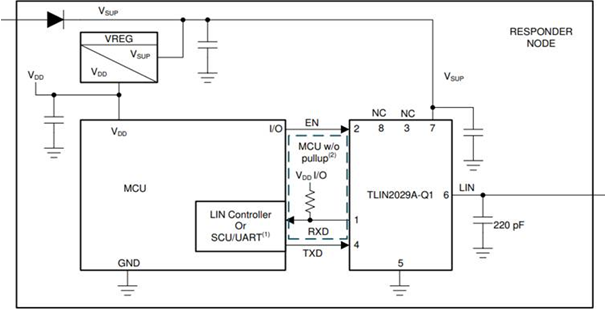Other Parts Discussed in Thread: TLIN1021A-Q1, TLIN2021A-Q1, TLIN2029A-Q1
Tool/software:
Dear team,
our customer want to know if they are using TLIN2029-Q1 with the following configuration:

under LIN2029-Q1's sleep mode, MCU is also in sleep mode (I/O PIN, Vdd are both pulled to low)
at this circumstance, if TLIN2029 receives a LINBus wake-up signal, how to wake up MCU as well.
Best regards,
Hank Lin



